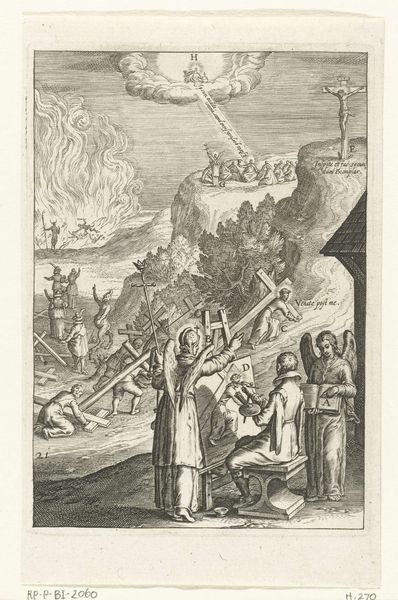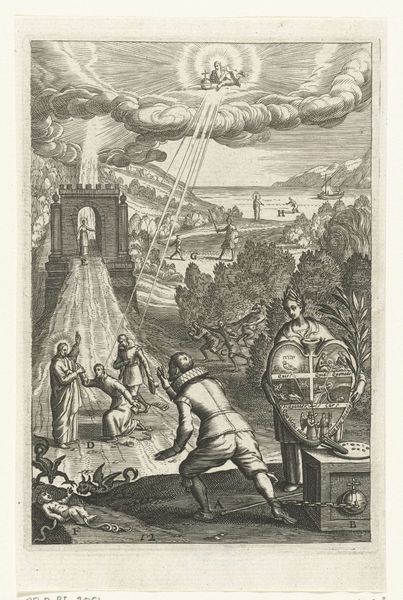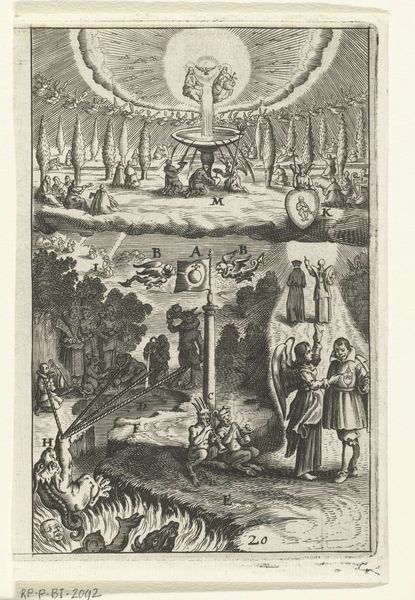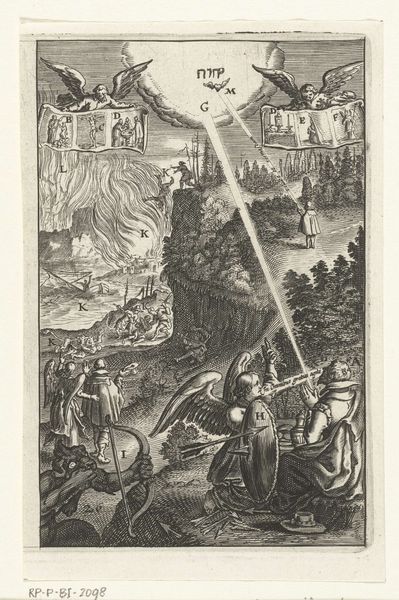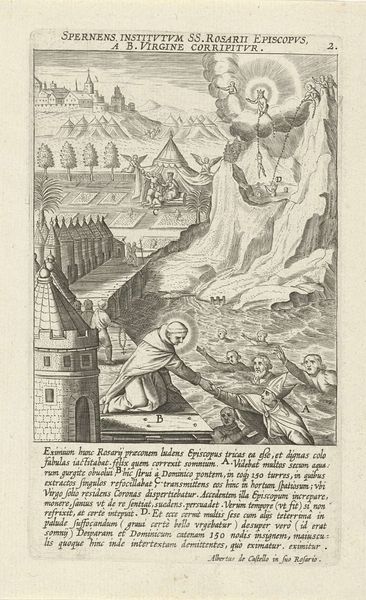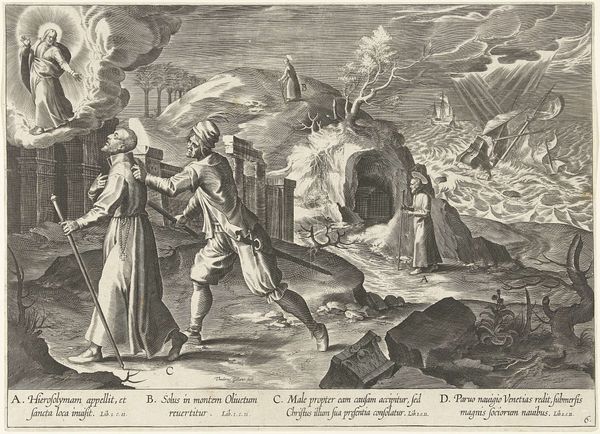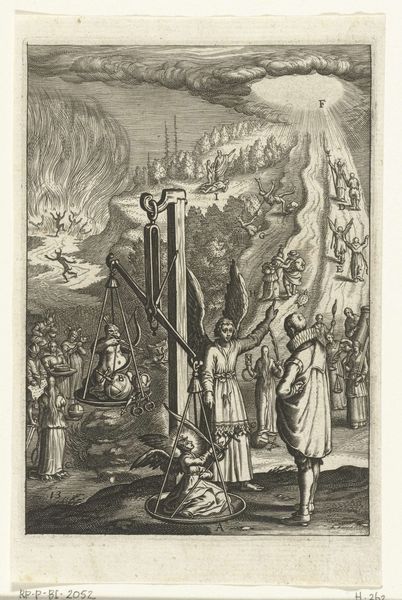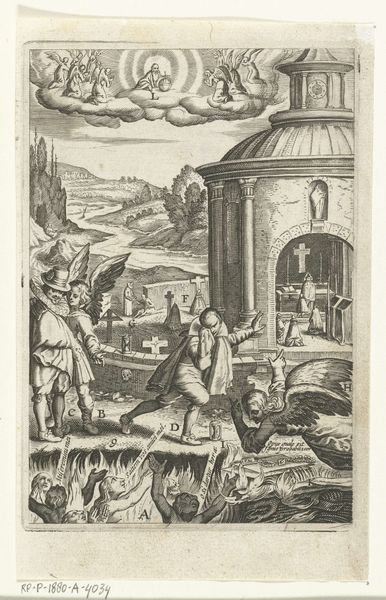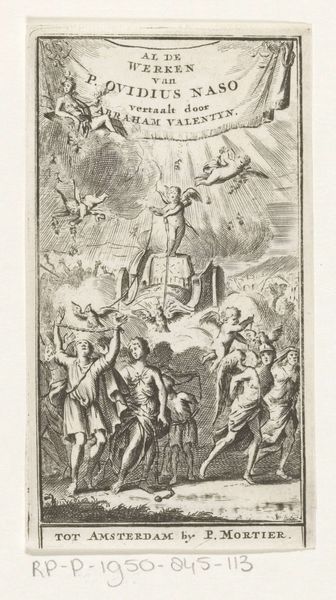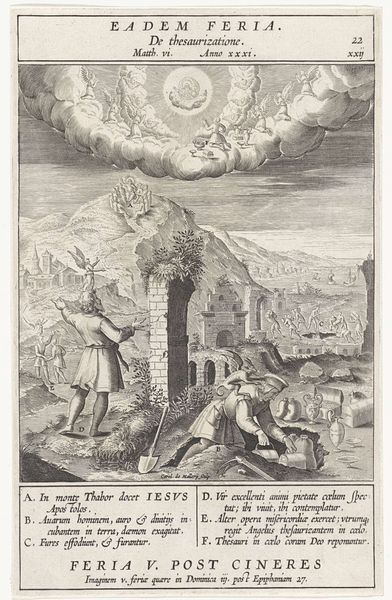
Embleem met man die portret schildert van Christus op de kruisweg 1620 - 1649
0:00
0:00
print, engraving
#
narrative-art
#
baroque
# print
#
figuration
#
history-painting
#
engraving
Dimensions: height 149 mm, width 99 mm
Copyright: Rijks Museum: Open Domain
Curator: Let’s turn our attention to this intriguing print, "Embleem met man die portret schildert van Christus op de kruisweg." It's an engraving, likely dating from between 1620 and 1649, attributed to an anonymous artist and housed here at the Rijksmuseum. Editor: My first impression? Overwhelming! So much detail crammed into this relatively small space. There’s a lot happening visually – what story is this emblem trying to tell? Curator: It’s a narrative, certainly. Notice the man carefully painting Christ carrying the cross, watched over by angelic figures. Around him, others physically bear crosses. To the left, you see figures amongst the flames, contrasting with the glorified Christ appearing in the sky. The inscription "Inspice et fac secum, dum exemplar" advises looking to Christ for a worthy exemplar. Editor: That interplay between earthly suffering and divine ideal raises fascinating questions. Who commissioned this work, and where would it have been displayed? The medium of print suggests wider distribution, indicating it was possibly designed for instructional or devotional use among a broad audience. Curator: Precisely. Prints in this period played a crucial role in disseminating ideas, particularly religious ones. The artist, whether known or not, becomes an instrument, replicating and distributing images to shape public understanding and piety. We should look at the production of paper at this time, and the economic investment and dissemination of such content. It really illuminates the artistic and consumer ecosystem of the time. Editor: It’s interesting to consider how an artwork depicting Christ’s suffering could have been manufactured through the labor of engravers and printers, turning pain into a consumable and reproducible object for mass distribution. The materials themselves speak volumes! Curator: It really is quite the image. The meticulous detail is so striking, especially the textural variations created solely through line work. I think looking into some historical writing may better illustrate the emblem's initial goals. Editor: Absolutely. By considering the image within its historical context of religious and political forces we may get a more holistic view. A study of the materials used would illuminate how these artistic choices influenced public consumption, which may in turn affect our experience.
Comments
No comments
Be the first to comment and join the conversation on the ultimate creative platform.
